Elementary school can be stressful for your little student. But it doesn't have to be. To help you, as a parent, organize an elementary school student, I've compiled my favorite tips and had my fellow Professional Organizers community share their thoughts as well. I hope it helps your child feel less stressed on their first day of school.
***Updated 2025: This post has been updated to include other tips that you may need this year.***
Jump to:
- Set up a student study area.
- Have a place in your student's backpack for papers to go back and forth from school.
- Have a system in place to help you manage the incoming school papers.
- DIY Kitchen Paper Management System
- Create a weekly paper sorter in your command station.
- DIY Magnetic Chalkboard Weekly Paper Sorter
- How to Make a Wall Mount Current Week Paper Sorter
- Time Blocking for Kids
- Organizing Hybrid digital and physical paperwork.
- Stay calm, and your kids will also be relaxed.
- Organize Elementary School Student Tips from Professional Organizers
- Great Keepsake Apps and Websites to Help Organize Elementary School Students and their Parents.
Set up a student study area.
It could be the dining room table or a table in the living room. Wherever it is, make sure to have all the school supplies they may need nearby and organized. Here is a school supplies caddy DIY project I created for my kids and have used it for years.
Visit our guest post for tips: EFFECTIVE WAYS TO OVERCOME YOUR CHILD'S STUDYING PROBLEMS by Leslie Josel from Order Out of Chaos.
Below are some easy and affordable DIY things you can make to help your child have a well-organized study space.
HOW TO UPCYCLE PLANTERS INTO A DESK PENCIL HOLDER
UPCYCLING CANDLE JAR INTO A CUTE MARKER HOLDER
TRANSFORMING A PLANTER INTO A COMMAND STATION ORGANIZER
HOW TO CHANGE A PLAIN SOUP CAN INTO A GORGEOUS DIY PENCIL HOLDER
HOW TO MAKE A DESK ORGANIZER ON THE CHEAP
Desks are key (affiliate) for children. It is an excellent place for them to hold anything they may need for their study session. Below are some desks from Amazon (affiliate) that will fit in a smaller home. All have some sort of storage and can be assembled. Check the size of your space to ensure it will fit before purchasing your child's desk.

Children's Desk with Chair, Bulletin Board and Cabinets, White
Buy Now → Buy Now →
Buy Now →  Buy Now →
Buy Now → (affiliate)
Have a place in your student's backpack for papers to go back and forth from school.
Each child should have their own backpack and a designated place for it at home. Sometimes, kindergarten and first-grade teachers provide folders that can be stored in backpacks. If your teacher doesn't, ensure your student knows where to put the papers for homework and school communication in their backpack. Teaching them where to place their paperwork in their backpack will help them stay organized throughout the year. It can be a plain folder or a folder with pockets.
Be vigilant and ensure they place the papers where they should be in their folders. Reminding them daily is essential. It may take up to 2 weeks or a month to see any consistent progress.
A cubby system or hooks in the closet work great for backpacks for younger children. But, even a place next to their desk works well too.
Cubby or locker systems (affiliate) work well for storing backpacks and other items, too. These I found on Amazon (affiliate) can easily be stored in an installed garage (affiliate), mudroom, or foyer. The best place to have these units is near the most frequently used door into the house. If you can't place it there, choose a location where the kids naturally drop their belongings when they enter the home. Changing their systems will take them much longer to learn the new drop zone for their things.

Locker Cubbies 2-Section Coat Locker with Bench
Buy Now →
Locker Cubbies ClosetMaid KidSpace Wooden, 2 Cubby
Buy Now →
Locker Cubbies Streamline 3-Section Toddler Coat
Buy Now →(affiliate)
Have a system in place to help you manage the incoming school papers.
While I know a lot of this information is available digitally, not all school districts have the necessary technology, so your child will still receive printed papers. These papers can also come from after-school activities and sports schedules. You can store these crucial papers by month or every few months in a filing cabinet (affiliate) or a portable accordion folder (affiliate). Click on the image below to see my paper filing system.
DIY Kitchen Paper Management System
Organizing the family's kitchen papers can be a daunting task. These could include documents from your kids' activities and school, doctor's appointment paperwork, manuals, and your bills. It's a task that needs to be done daily, and possibly even multiple times a day. Having an effective kitchen paper management system is crucial.
Create a weekly paper sorter in your command station.
This would be a place for weekly paperwork that needs to be taken to school or in a backpack. I created a few of these current weekly organizers. You can check them out to see if they work for you. Click below to see how I created this DIY weekly paper sorter, which can be easily made.
DIY Magnetic Chalkboard Weekly Paper Sorter
A few years ago, I created a weekly paper sorter in my old kitchen. Here is the link to that DIY project. I used this paper sorter for my kids' papers for the week. This is how I would use it: On Sunday, I would pull all the papers and envelopes I needed for the
How to Make a Wall Mount Current Week Paper Sorter
Papers in the kitchen can get unruly quickly, especially with a family of four with two school-age kids. So, each Sunday, I go through my accordion folder and pull papers that correspond to the up-in-coming week. Papers for doctors and papers that describe events or activities for that particular week are placed in order on the
Check out a command station DIY idea: HOW TO MAKE A DIY COMMAND STATION MAGNET BOARD
If you have a desk in your kitchen, using something that will organize your kids' papers will help you manage them better. Below are some I found on Amazon (affiliate) (affiliate).
 Buy Now →
Buy Now →  Buy Now →
Buy Now → 
Scrapbook Paper Organizer 12x12-7 Tier File Organizer
Buy Now →(affiliate)
Time Blocking for Kids
Scheduling the same time every night for the children to do homework works well for everyone. Say they have after-school activities from 6 PM to 7 PM. Have them do homework from 5 PM to 6 PM. This will give them time after their after-school activity to relax and get ready for bed.
Also, decide if your child is more alert or aware after their daily sports activity. If so, you may want to have them do their homework after practice rather than before.
Each child is unique, so be aware of when they have more energy, which will help them understand the school material quickly. Remember, if they are tired, they may not absorb anything, resulting in confusion, sadness, and poor grades.
After you determine their best time for studying, writing a time-blocking chart and posting it where they can see it each day works great to remind them of what's coming up next. A large wall-mounted paper calendar works great too, showing color-coded activities for each family member.
Organizing Hybrid digital and physical paperwork.
With all the digital and physical products used, children need to learn to organize both their digital tools (affiliate) and physical paper. The digital products work well for the vast majority of people. Still, it's essential to understand that if your child has ADHD or other learning disabilities, they may be able to organize their digital tasks but may struggle with managing their papers.
Make sure you have direct communication with your child's teacher to assess their progress. Reaching out at the beginning of the year and throughout the year to get updates (not just at parent-teacher conferences) helps you stay involved with your child's education and how they are organizing their digital and physical paperwork.
Discover more about virtual tools (affiliate) that can support children's learning. This post gives you several tools (affiliate) to help your kids stay focused on digital devices. Visit 10 digital tools for elementary school students by Prep Global from Arizona State University. If your student hasn't started school yet, it may be beneficial to try some of these out so your kids can become familiar with these educational platform tools (affiliate), making the transition to school easier.
Stay calm, and your kids will also be relaxed.
No one wants an anxious child. It's essential to remember that when communicating with your child and helping them stay on top of their tasks, things may become heated, and you both may feel overwhelmed during the process. Step aside, take a few deep breaths with your child, and take a moment to slow down. Ask them more open-ended questions to understand their issue and what is going on. Parents only see a part of the child's day. When a parent reacts, only having part of the information can stress the child out and may not help the parent reach the correct solution.
Not only do you have to organize the papers at home, but you also need to instill good habits in your elementary school kids while they are still learning how to manage their time and other tasks. Below, other Professional Organizers and I are sharing our favorite tips for organizing elementary school students.

Organize Elementary School Student Tips from Professional Organizers
The first tip is from Linda Clevenger.
"This is probably not your typical tip, but I feel that being an organized parent is one of the best lessons that we can teach our children. Elementary are students are totally impressionable and will follow our lead in the areas of time/schedule management. Some of the things we put into place when she went off to Kindergarten were - Consistency in storing: backpacks, shoes (affiliate), jackets, and lunch boxes (affiliate) every day. Creating routines will save everyone time, frustration, and stress. And, it helps create organizational habits at a young age." ~Linda Clevenger from Organization Direct
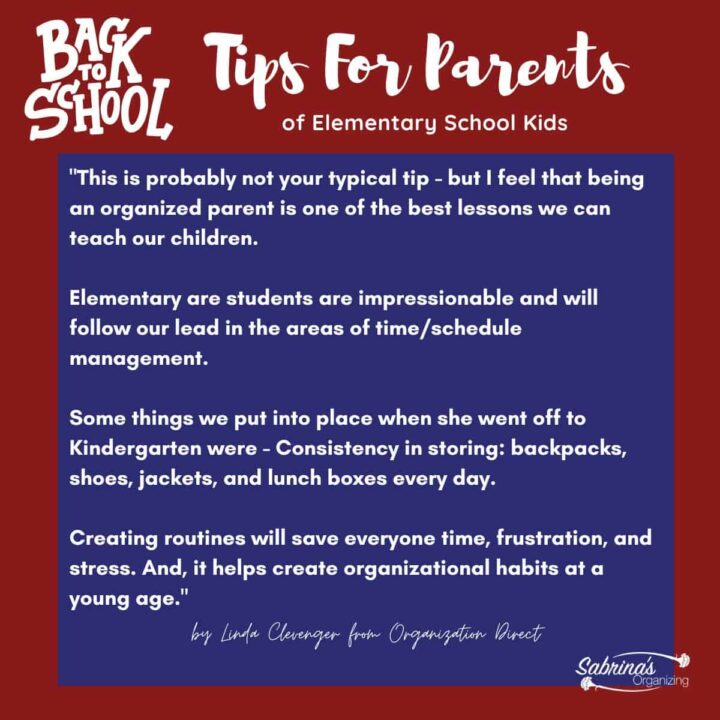
This tip is from Daria Harvey.
"Have a homework caddy (affiliate) and school supplies at the ready wherever your child does homework. Mine worked at the kitchen table, so I had a three-drawer Sterilite organizer in my pantry (affiliate) for paper, scissors, pencils, pens, colored pencils, crayons, index cards, etc. It saves time and stresses not having to search for what they need to do their homework and projects. I'd also say it's so handy to have a place in the refrigerator and in the pantry (affiliate) for kid snacks and lunch items. This way, they can help prepare their own lunches. Teaching independence is so important." ~ Daria Harvey
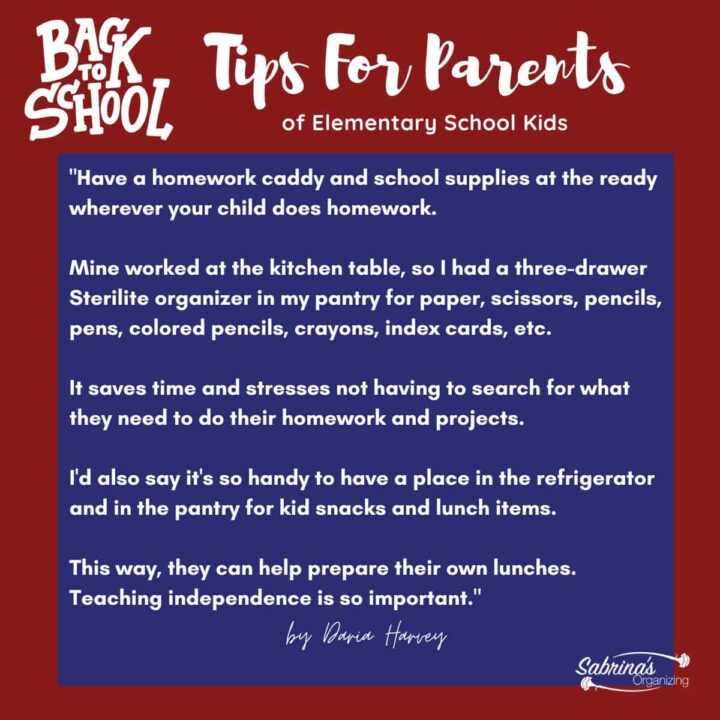
The third tip is from Jonda Beattie.
"Always keep graded school work until the end of each grading period. If you have a question about a grade, you should bring it to the conference. At the end of each grading period, cull most of the work, keeping only the best." ~ Jonda Beattie from Time Space Organization
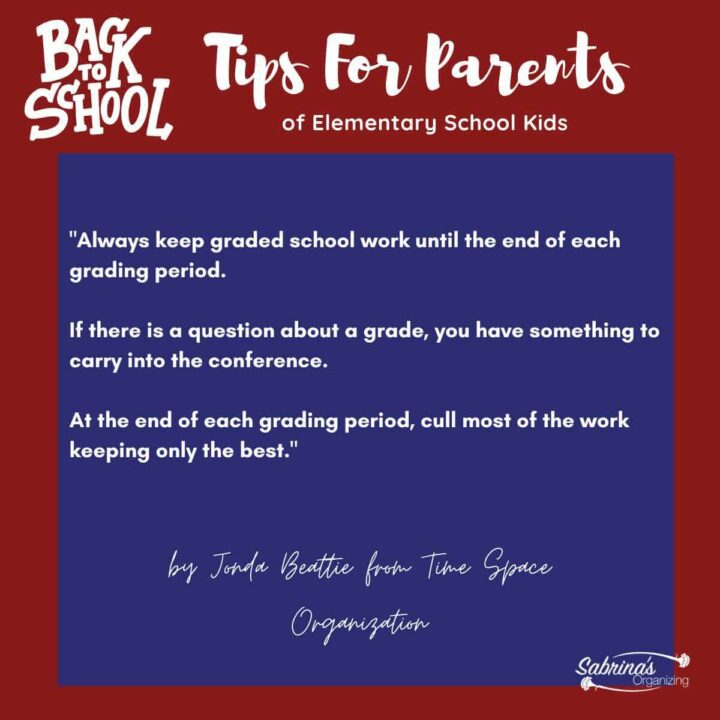
The last organized elementary school student tip is from Liana George
"Create a landing pad near your main entry/exit door for backpacks, shoes (affiliate), lunch boxes (affiliate), and other activity-related items. This way, everyone will know where things are, and they won’t be searching around the house looking for lost or misplaced items. Near your landing pad, have a master checklist (affiliate) for the kids to check before leaving each day. The list can include: Do you have your homework, signed papers, lunchbox, lunch money, after-school activity/necessities, keys, gym clothes (affiliate), band instruments?" ~ Liana George
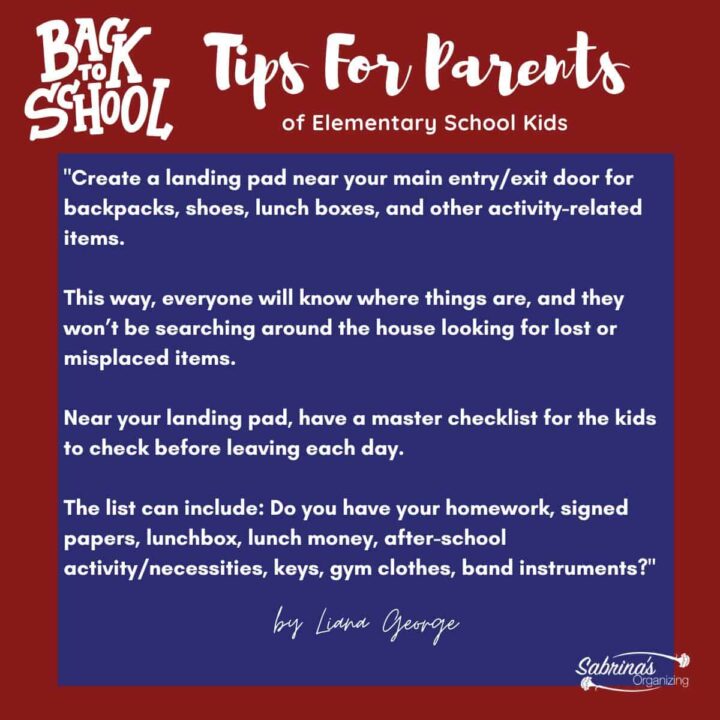
Feel free to share the images above to share these great tips!

Many things happen during the school year that you may want to keep; we're sharing a few apps to help you stay organized with all those keepsake items.
Visit our back-to-school student challenge for a comprehensive step-by-step guide to get your child organized.
Great Keepsake Apps and Websites to Help Organize Elementary School Students and their Parents.
Below are two apps to help you organize your students' memories:
Cool Product - Artkive App post by Stacey Agin Murray - A really neat app to help you manage all your elementary school students' artwork. See how Stacey used it.
Review of Keepy App To Organize Kids Momentos by Sabrina Quairoli - this app gives you different opportunities to organize your kids' stuff. See how I used it.
I hope this post helps you and your children stay organized this school year.
Labeling is fun! The website below, Mabel's Labels (affiliate), customizes labels (affiliate) to help them look cute, are affordable, and help your kids enjoy labeling their own stuff. (affiliate)

Mabel's Labels Back to School Promotion
Buy Now →(affiliate)
Do you have any tips you want to share? Please leave a comment below. I would love to hear from you.
Below are Amazon (affiliate) (affiliate) links. If you click through and make a purchase on Amazon (affiliate), I will receive a small referral fee at no additional cost to you. Happy shopping!
Visit our other elementary school-age kid posts for more tips:
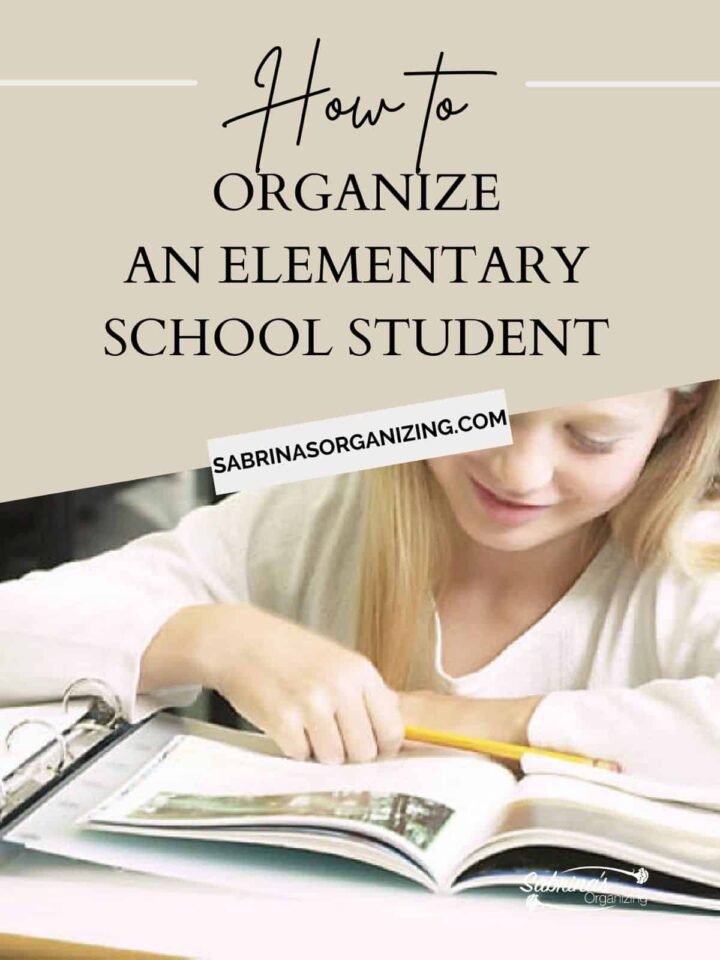
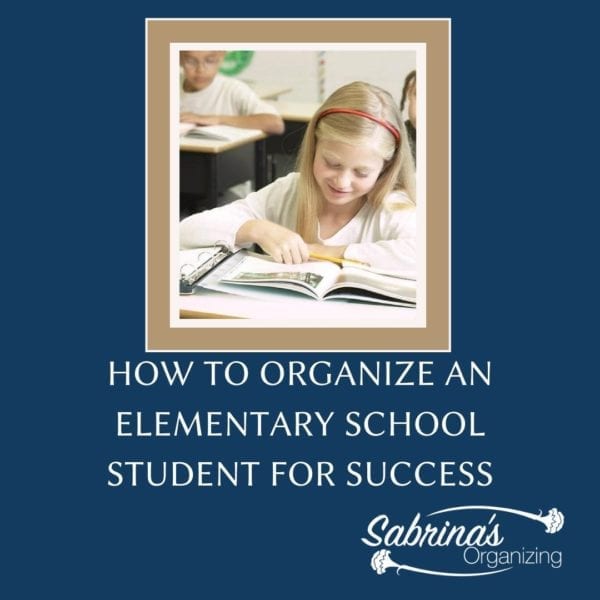
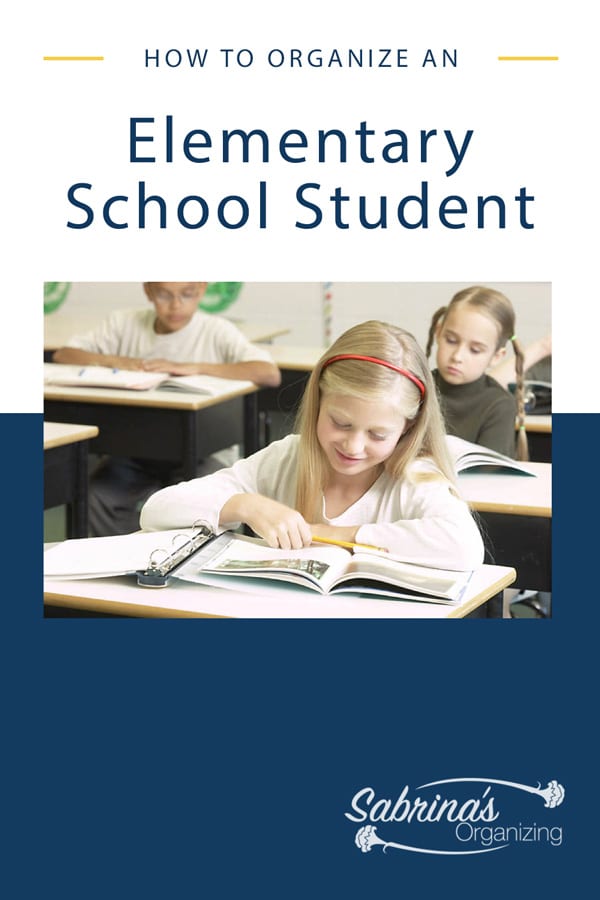
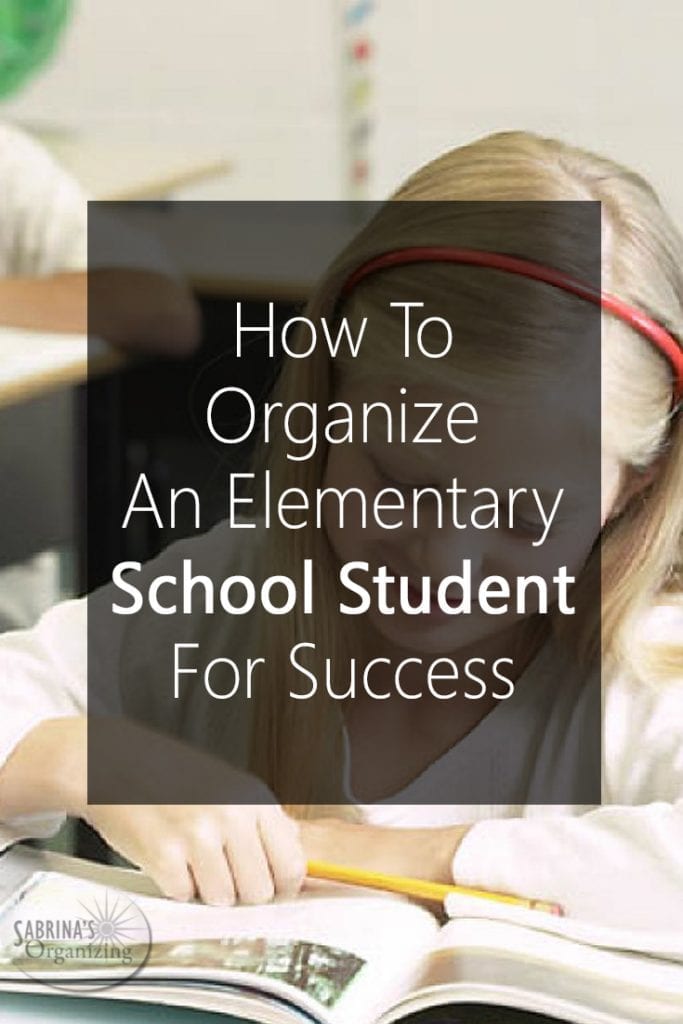



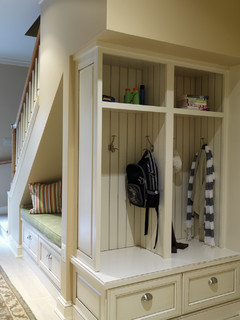
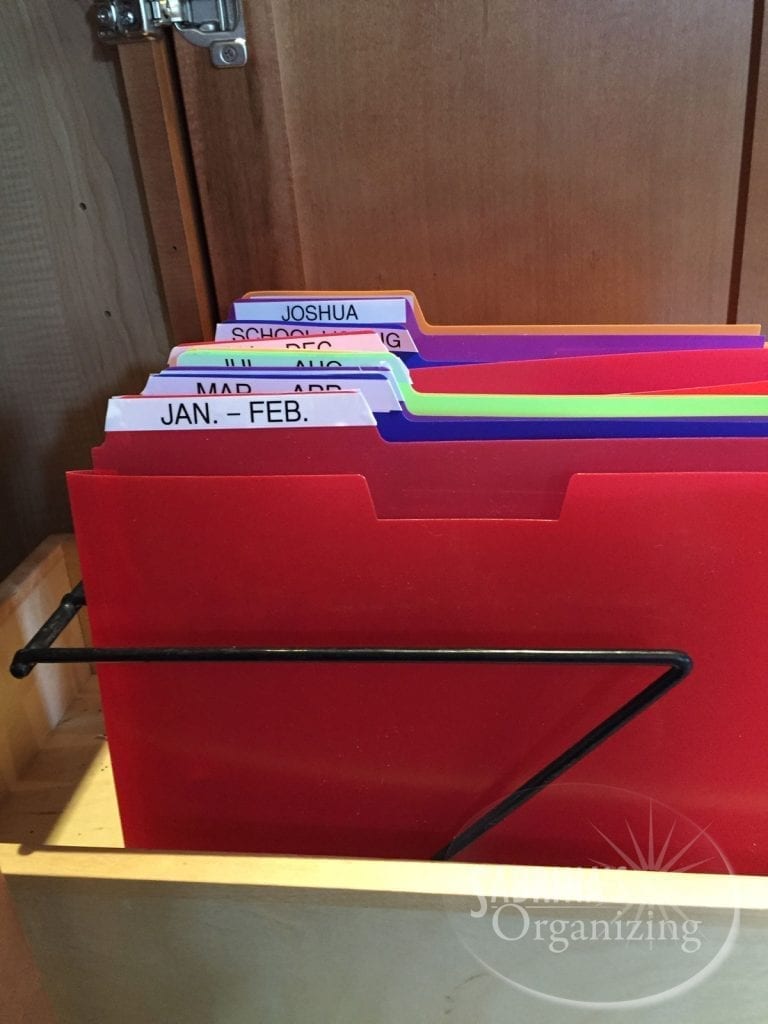
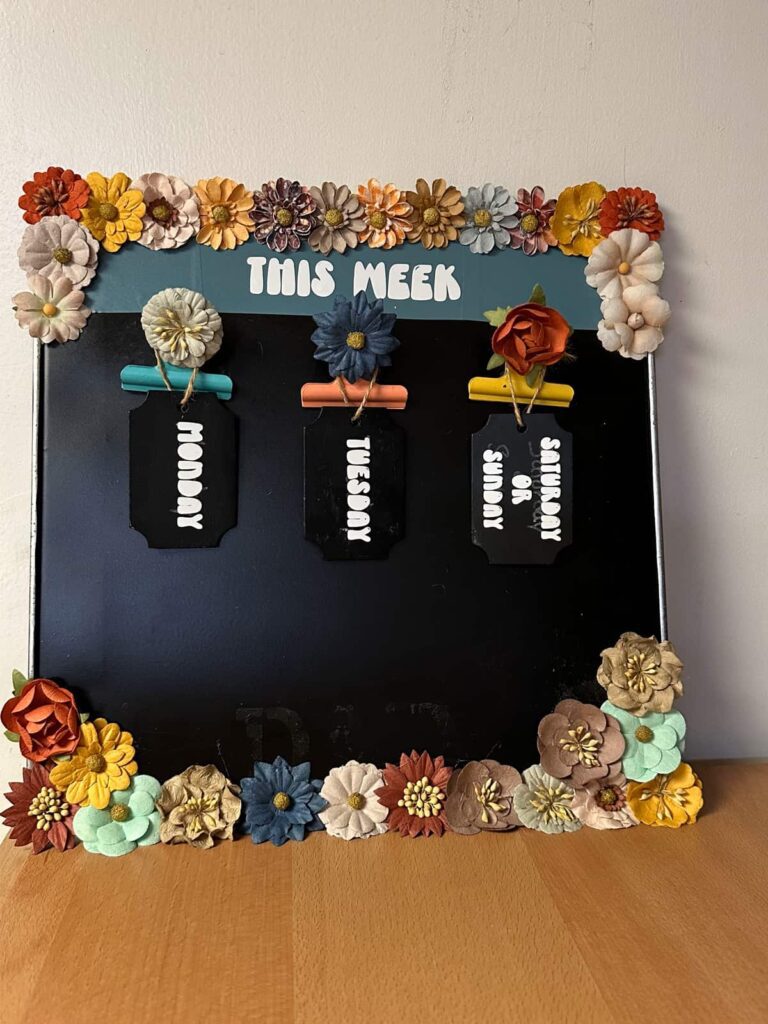
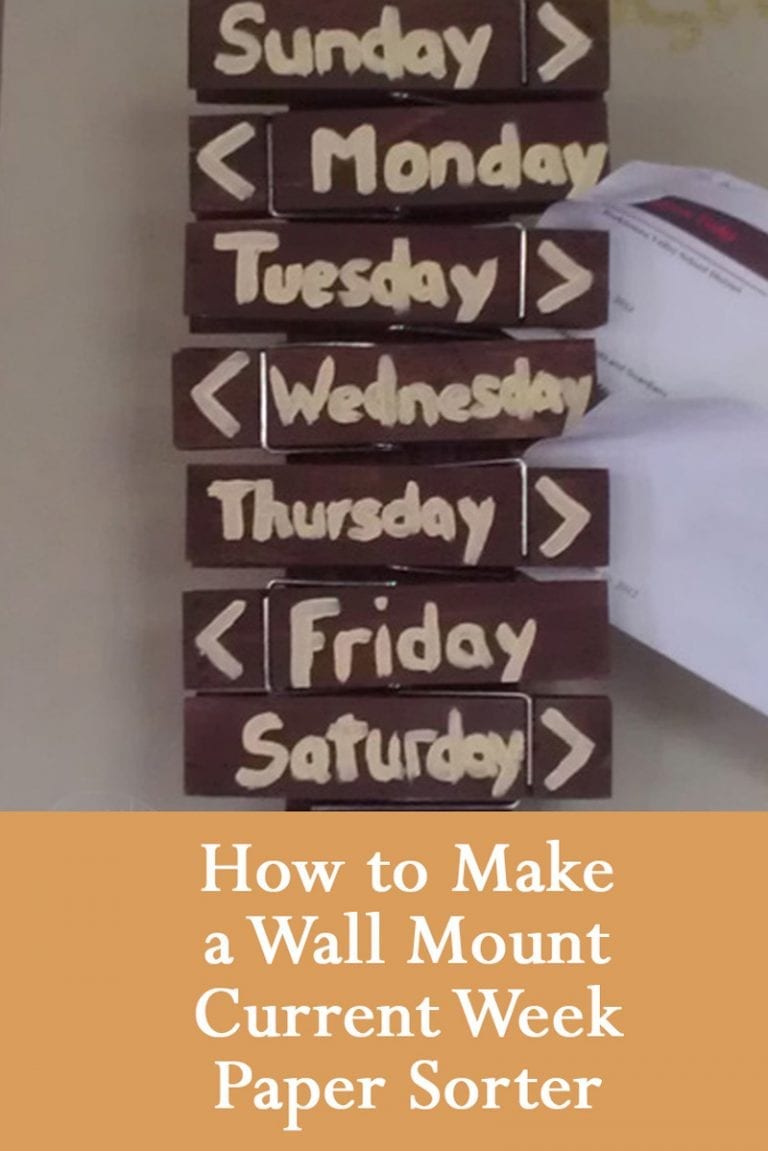

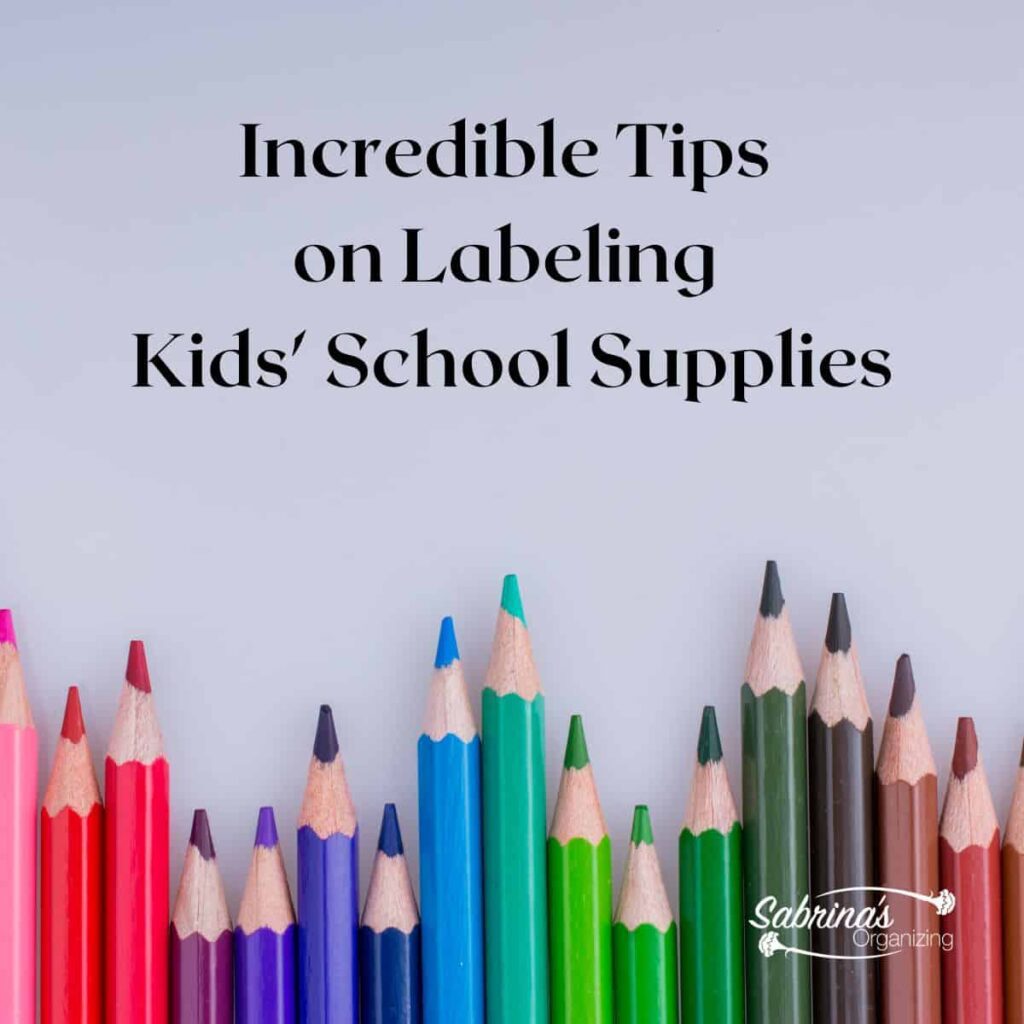
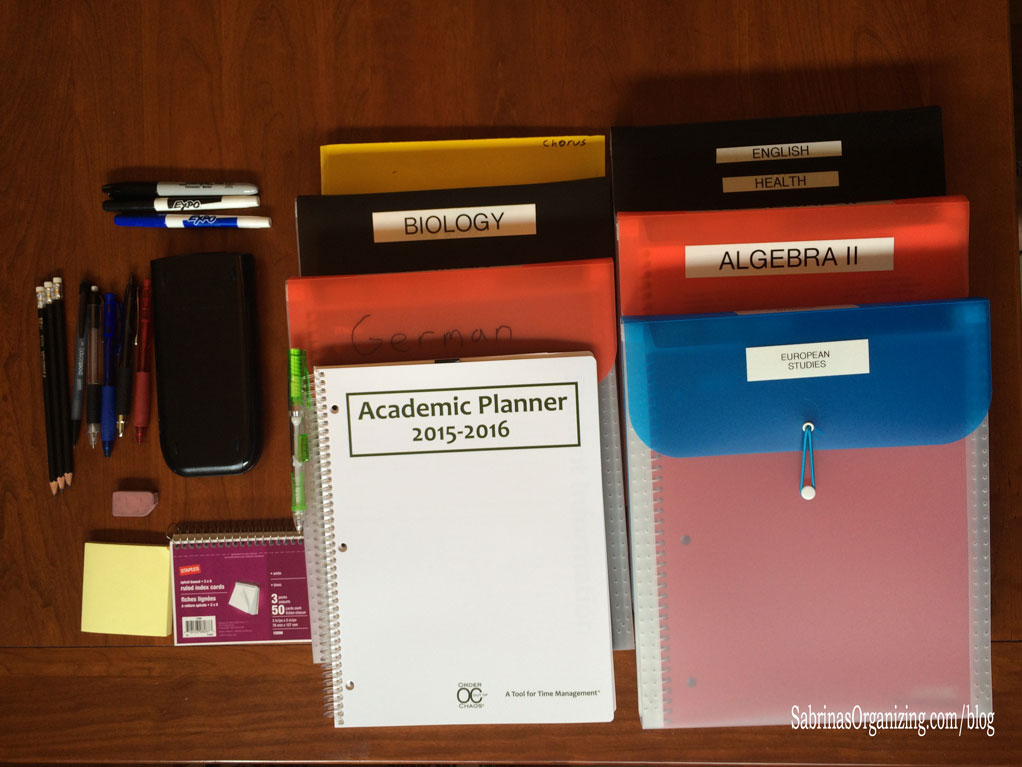
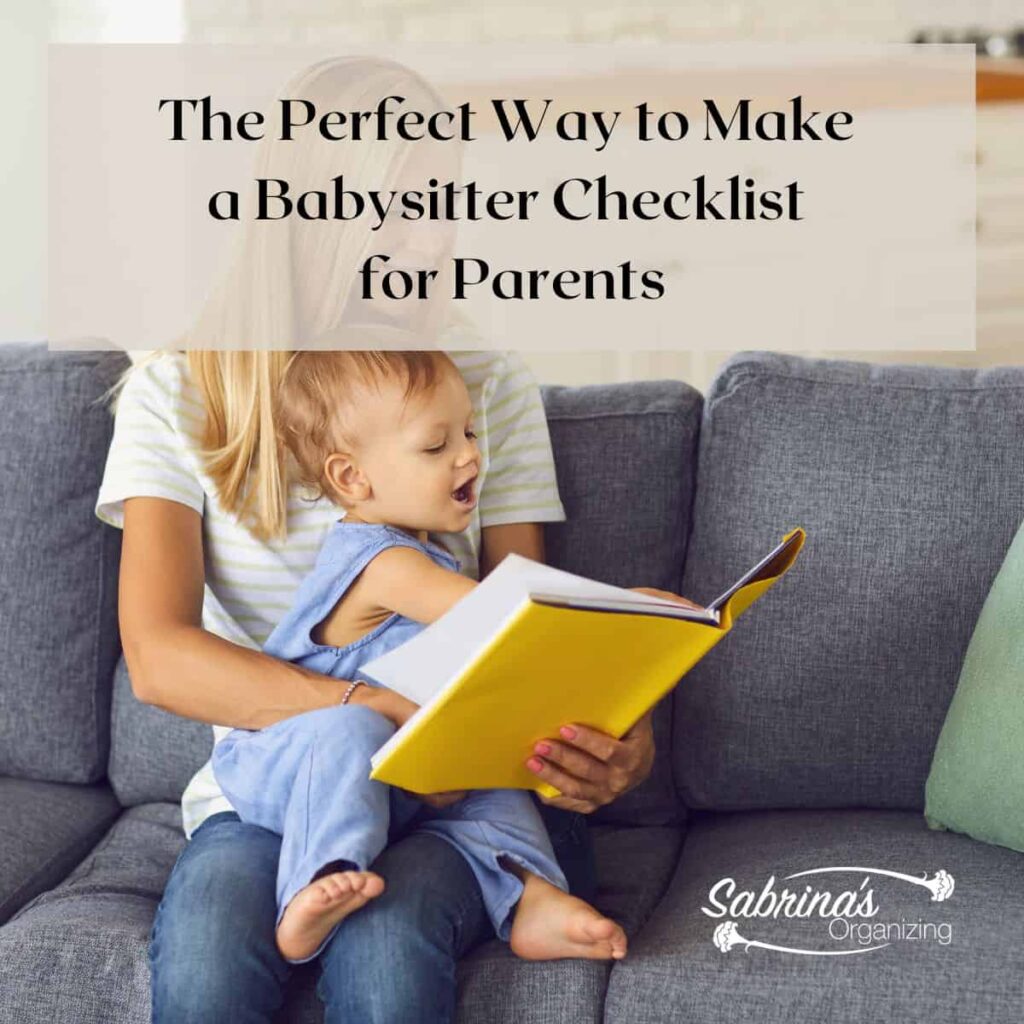
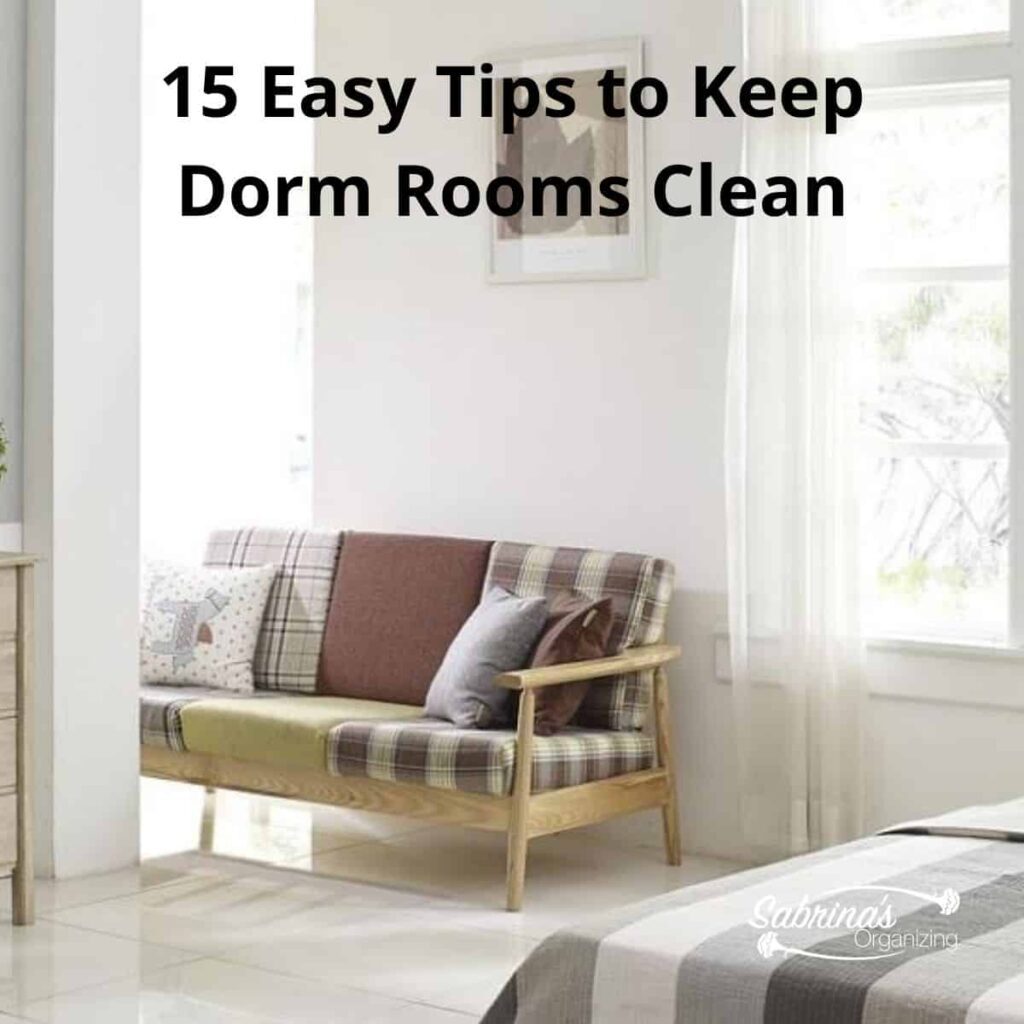
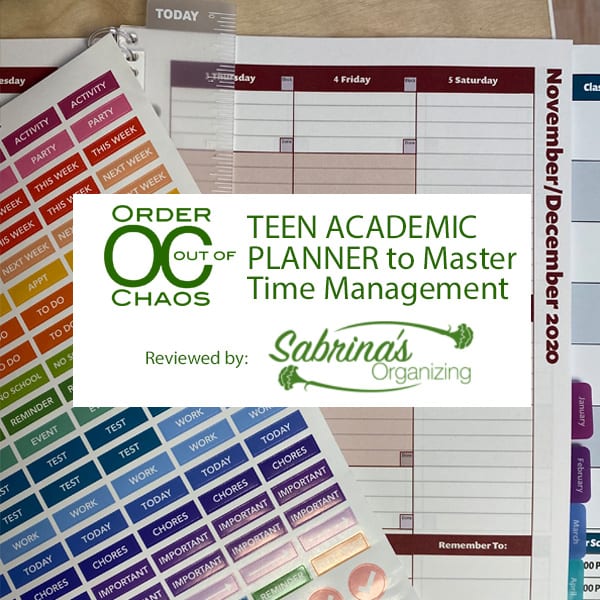
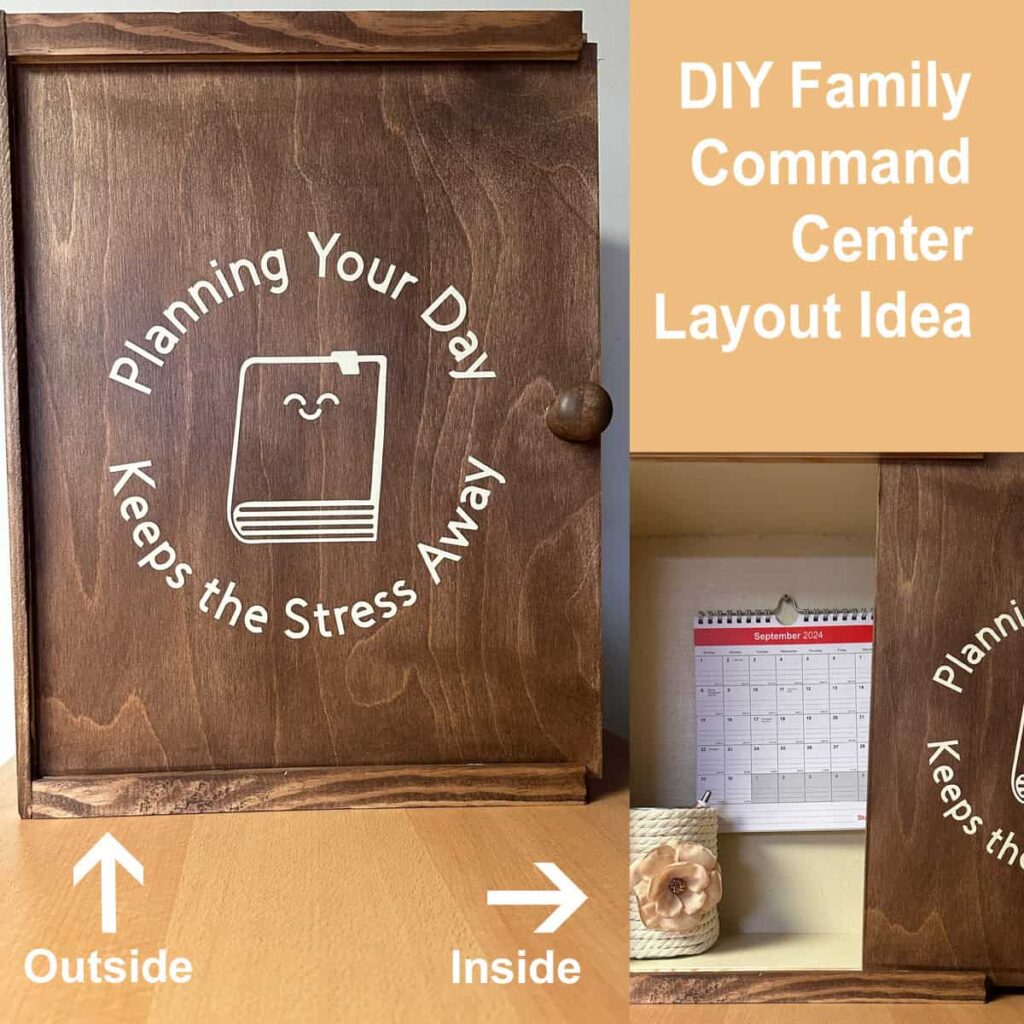
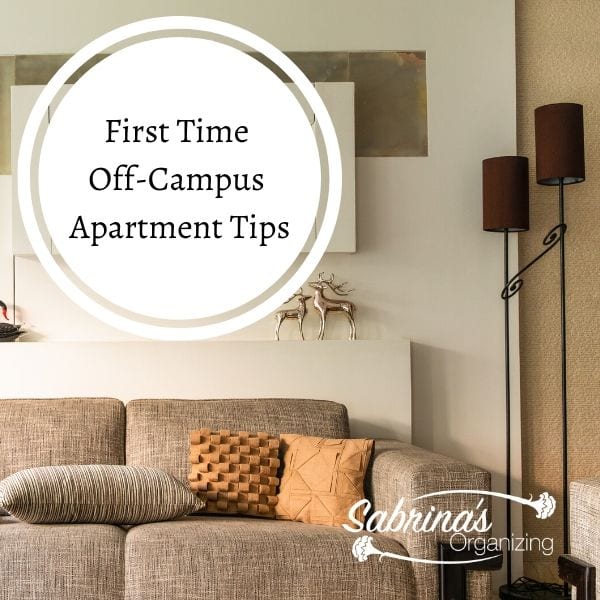
Janet Schiesl says
Great variety of tips for returning to school. Thanks for sharing.
Julie Bestry says
This is a great way to start the school year. My friend sent me a "first day of school" photo of her boys (one in middle school, one in pre-K) this morning, and it called to mind all of the advice you covered.
The one additional suggestion I'd make: that place in the backpack for sending documents back and forth to school? Make it a poly envelope rather than a paper folder or envelope. Kids are rough on their stuff, and thermoses (and all sorts of other things) spill and tear and tumble. Poly envelopes can keep the paper protected until it gets where its going.
Sabrina Quairoli says
Great idea, Julie! Poly envelopes also work great for high school students who need to manage assignments. They are super hard on paper too.
Janet Barclay says
I like the idea of setting up a study area in the dining room. Kids often don't want to work in their bedrooms but be out where everything is going on, and that's a happy medium between isolation and doing homework in front of the TV.
Laura says
Great tips as always! Starting them off organized (and having them be a part of the process) in elementary school helps create good life long habits for school organization. Students that don't learn these skills really start to struggle when they get to late middle school and high school so it's definitely best to start young! 🙂
Sabrina Quairoli says
I agree, Laura. Thanks for stopping by and commenting. =)
Diane N Quintana says
These are fabulous tips. My favorite is having a place in the backpack for papers to come home or to return to school. So often they are a crumpled mess at the bottom of the bag. When I taught Kindergarten I gave each child a folder with two pockets. Early in the school year we put the papers to go home into the folder together as a group so that children who needed help with this skill received it.
Sabrina Quairoli says
Thanks for commenting, Diane! I love that my child had teachers like you. At that age, organizing skills are primarily taught by doing, not telling.
Seana Turner says
Today is the first day of school in my town. Definitely time to read this and get organized.
I have noticed that fewer papers are going back and forth than used to be common when my children are little. Now they all have teacher website and so much is online. I'm not sure this is a good thing, but it is happening.
At least in elementary school you still do get artwork, maps to color in, math worksheets, etc. I liked seeing the paper each day because it gave me a chance to see what my kids had been working on.
Sabrina Quairoli says
Thanks for stopping by and commenting, Seana. I agree that having the paperwork and other things come home during elementary school does help parents understand how the child is doing and what they are learning so the parent can easily install these skills throughout the rest of the week.
I also don't know if having the child's teacher share content on a website benefits the child or the parent. I know many parents who never visited their child's teacher's page, and when there is a problem, the parent scramble for help.